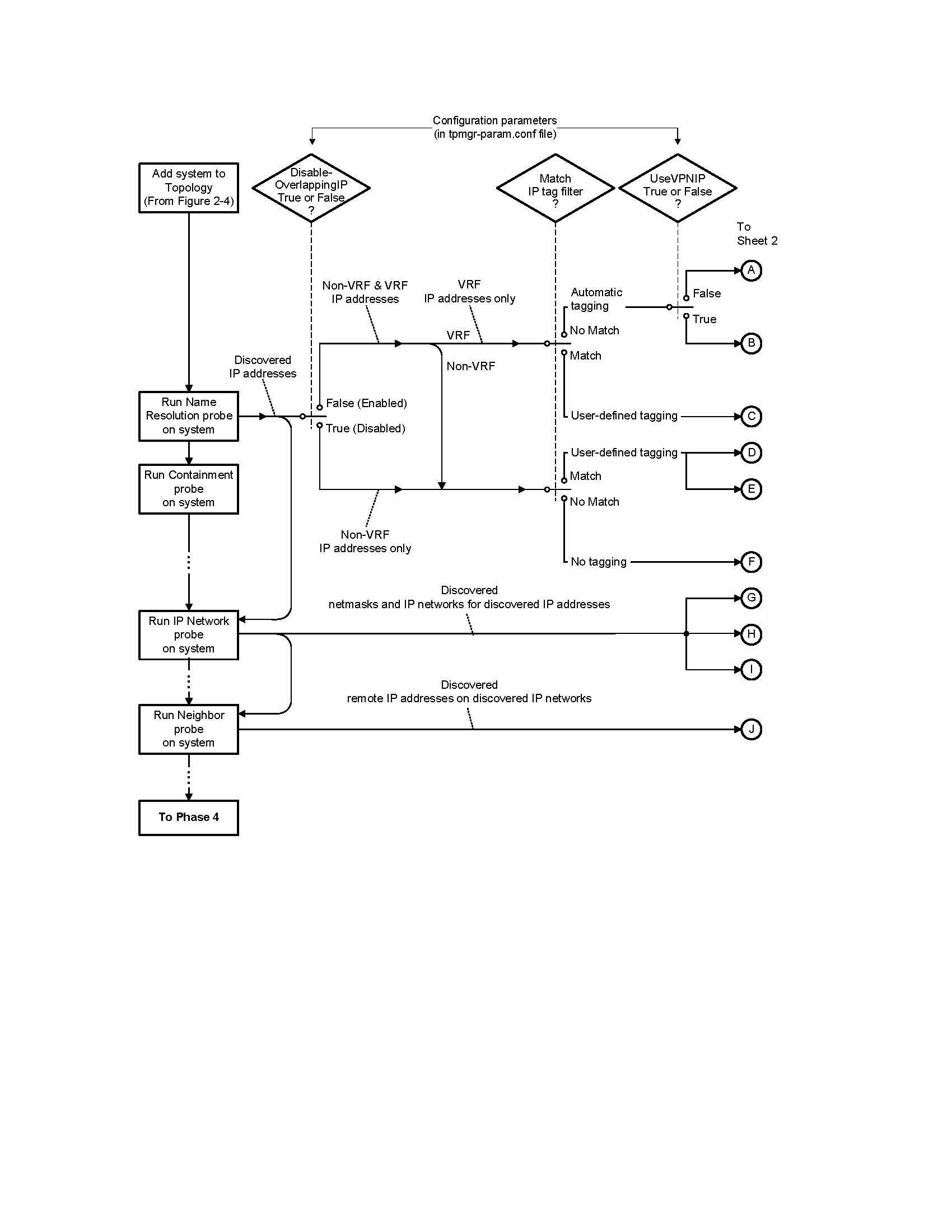During the third phase of the discovery process, shown in Phase 3: Probing the system added to the topology (Sheet 1 of 2), each system that is destined for the topology is probed to gather additional information about the system, which includes the system’s components (such as cards, ports, interfaces, and so on), IP addresses, VLAN membership, environment sensors, system resources (such as memory, CPU, and so on), IP networks, netmasks, and neighboring systems. The IP Manager uses this information to create the topology for the system.


Among other things, the network IP addresses that are formed from the discovered IP networks and netmasks serve as input to the autodiscovery process. Autodiscovery, if enabled, will compare each of these IP addresses against one or more discovery filters and add each IP address that matches a filter to the discovery queue. Discovery filters are described in the IP Manager User Guide
Autodiscovery is available for IPv4 systems that have SNMPv1 or v2c agents.
The discovery process uniquely identifies the system within the topology and determines the system’s level of certification. These tasks are accomplished by using the sysName, sysDescr, and sysObjectID information retrieved from the initial SNMP poll.